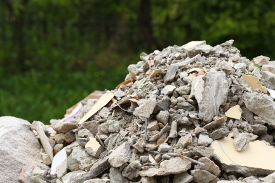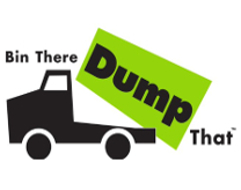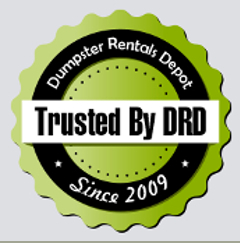Garbage

In the United States paper and cardboard products make up about 40 percent of the weight of city garbage. Food waste accounts for about 10 percent of the garbage. The rest is a mixture of yard trimmings, wood, glass, metal, plastic, leather, cloth, and other materials.
Getting Rid of Garbage
Garbage builds up very quickly near homes and businesses. Since garbage usually contains smelly and germ-jilled food waste, it must be removed quickly. In most areas this task is handled by garbage trucks. The trucks have built-in crushers that smash garbage to less than half its original volume. By doing this, garbage trucks can gather more trash before dumping their loads.
Once garbage has been collected, it may be treated to make it smaller. The most common way of doing this is through incineration, or burning. Incineration turns garbage into a mixture of ash and solid chunks of metal, glass, and other hard – to – burn materials. When the burning process is finished, garbage weights only about 10 percent as much as it did originally.
Another way to reduce the size of garbage is through composting. In this method, organic waste (including food scraps, lawn trimmings, and wood) is separated from glass, metal, and other inorganic materials. The organic waste is shredded to form fine debris. This debris is then stored in piles and stirred every few days. Within a few weeks bacteria within the debris have digested the waste. The leftover material is called compost. It is a safe, clean mixture that can be sold as mulch or soil fertilizer.
Mot all garbage receives size-reduction treatments. Most is taken directly to sanitary landfills, which are safe dumping grounds for trash. Sanitary landfills have special liners that keep waste from touching underground or surface water. Also they are covered each day with a fresh layer of soil that traps smells and discourage bugs and rodents. These measures and others stop landfill garbage from polluting air or water or becoming a health hazard.
How Well Does It Work?
All methods of garbage disposal have good and bad e points. Incineration] for example] is an excellent s way to shrink garbage volume. The small amount
of ash and debris that remains after garbage burns takes up very little room in a landfill. However] incineration also releases many pollutants] including dangerous gases] cinders, dust, and soot. For this reason garbage must be burned in special furnaces that trap pollutants. These furnaces are expensive to build and operate. They also use a great deal of electricity-and creating electricity usually involves the burning of fossil fuels, which creates air pollution.
Composting, too, has pros and cons. On the positive side, it changes garbage into something that is actually useful to the environment. On the negative side, composting only works for organic material, which makes up just a small part of the garbage created. Also, finished compost can be hard to get rid of. Compost is a good natural fertilizer, but it is heavy and therefore expensive to ship. For this reason many farmers prefer chemical fertilizers and will not buy compost.
Finally, landfills have many good and bad points. Landfills are the safest places to store most types of garbage. They are also inexpensive to build and operate and they can handle a lot of trash in a small amount of space. On the other hand, landfills take up valuable land near cities. They also produce methane a poisonous gas that must be carefully controlled. And they can leak a pollutant called leachate if they are not well built. Leachate is created when water enters a landfill and picks up dangerous substances produced by decomposing garbage.
Serious problems, however, are extremely rare at modern facilities. Today’s landfills are so sturdy that pollutants rarely escape. Abandoned and covered-over landfills are considered so safe, in fact, that sometimes they are made into public recreation areas.
Private dumpster rentals companies such as Bin There Dump That , RMS Disposal , Richmond Hill Bin Rental use landfills to dump the waste material they collect from construction sites, demolition debris, renovation or remodeling waste or just the household junk that municipal waste management companies don't take.
- Published: 2013-06-03T11:29:25-07:00
- Author: Victor Schmidt




